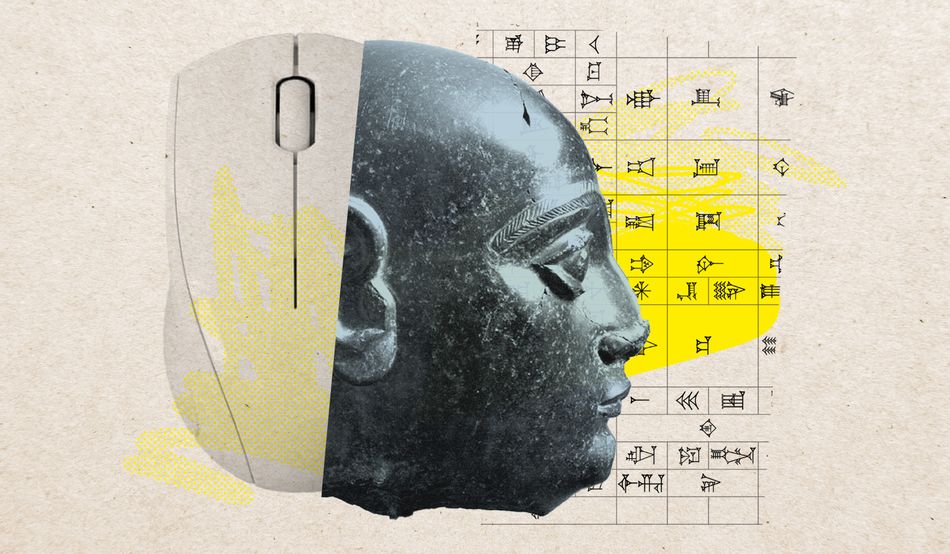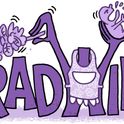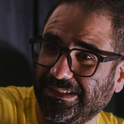If asked to list the most important civilisations of the ancient world, many people of the west would mention Greece, Rome and Egypt. After that, if pressed, some might hazard a guess at Mesopotamia, or perhaps Assyria. A small proportion might have heard of Gilgamesh, and an even smaller one know him as the legendary king of early Mesopotamian literature. But then their suggestions would likely dry up.
In fact, long before the Ancient Greeks built their citadels and set out on heroic expeditions across the Mediterranean, long before the glory of the pharaohs, the region of Mesopotamia, between the Euphrates and Tigris rivers, saw the rise and fall of what was very probably the first “high civilisation” in history: Sumer. Out of it came writing; the first evidence of the wheel, canals, urbanisation and legislation; a counting system that led to days being divided into 24 hours and hours into 60 minutes, and so much else besides. The Greek goddess Aphrodite, for example, was modelled on a goddess called Ishtar, who herself was a reincarnation of Inanna, the Sumerian goddess of love and war. The stories of the gods of ancient Sumer, and its heroes, including Gilgamesh, were there at the heart of many later myths and legends.
Despite all this, the Sumerians’ influence is largely invisible in school curricula, at least in the west. There are professors of the classics, outside Iraq, who have never studied anything older than the Greeks. “I tend to think that it is just part of our history,” says Enrique Jiménez, a professor in ancient near eastern literatures at the Ludwig Maximilian University of Munich. “It’s simply our duty to understand it.”
Soon, many more will. Developments in artificial intelligence, digitisation and international scholarly collaborations mean that this liminal civilisation, standing at the boundary of prehistory and history—this land of high culture, bustling cities, the first literature—may be about to get its day in the sun. In academia, the study of these ancient cultures, with their fascinating languages and huge bodies of written sources, is now arguably one of the fastest moving and most exciting field in the humanities.
Driving this academic acceleration are the Sumerians themselves who, along with the civilisations that followed, wrote in their own language on durable clay tablets, longer lasting than papyrus or parchment. Subsequent civilisations—the Akkadians, Babylonians and Assyrians—all used variations of a language now called Akkadian, but also kept using Sumerian in religious contexts.
Today, scientists and historians have access to about five million words of Sumerian text, and about 10m words of ancient Akkadian text—millions more than the Romans left us in Latin. In fact, Akkadian, which only died out around the time of Christ, is “the second-best attested language of antiquity” after Greek, according to Jiménez. Sumerian, the more ancient tongue, continued to be used in writing until about 100 BC.
Great numbers of clay tablets have already been found in the region, but not yet deciphered, and more are discovered almost every day. Now the writings upon them, created at the dawn of history, are being pieced together with the help of AI. For Jiménez, whose team are at the forefront of such translations, this current work on clay tablets is like that of scholars researching the Greek classics during the Renaissance. “The scholars in some monastery might discover a new work by Plato, that no one had seen before,” he says. “That’s exactly what we are doing now.”
His team discovers new fragments of the Gilgamesh epic, written in the form of Akkadian used in Babylonian times, at the rate of about one a month. They have already published an electronic version of the Gilgamesh epic in all its versions and forms, and have created the first online Akkadian dictionary (translating to both English and Arabic). Once quiet backwater departments of Assyriology (sometimes called Sumerology or Mesopotamian studies) are suddenly hotbeds of innovation.
Until about 150 years ago, many had forgotten that Sumer existed at all. The clay bricks of the great Sumerian cities lay buried beneath those of later civilisations, such as the Babylonians and the Assyrians. People talked about them with no understanding that something older lay buried beneath their ruins.
Then, in the days of British Empire, archaeological interest in the region increased and a huge amount of work went into deciphering the writing on the tablets that digs in the area produced. These tablets were inscribed in a writing system which we now call cuneiform which, once it had been deciphered by (among others) an Irish clergyman called Edward Hincks, turned out to represent different languages, with Sumerian probably being the oldest of them.
At one archaeological site, Nineveh, an entire ancient library was found. No library of such import has ever been found elsewhere. Among its tables, archaeologists found the stories about Gilgamesh, and within them, a story of an ark—one strangely similar to the much later story, found in a book called the Bible.
This thrust Mesopotamia into the spotlight. When the pioneering scholar George Smith gave a lecture about the story of the ark in 1872, it became a sensation. “Recent research has shown that the Victorians were struggling with this whole Darwinian concept of deep time,” says Martin Worthington, associate professor in Middle Eastern Studies at Trinity College, Dublin. They believed that “the world was 6,000 years old, and that’s what the Bible says, and that’s fine. And then Darwin comes along with the theory of evolution and suddenly it transpires that, actually, it might be a lot older. Then Gilgamesh shows up, and it’s this poem with the flood… from God knows when… so people get really excited about it.”
It was during this time that academics fully understood that a civilisation called Sumer had existed long before the Akkadian-speaking civilisations that came after. A lost civilisation emerged from desert sands, and was, briefly, of great interest. But the wheel turned. Evidence that Bible stories came from earlier cultures lost the power to shock. The sites of Sumer were less attractive and harder to visit than those of Rome, Cairo and Athens. Once again Sumer, and Mesopotamia in general, faded from the view.
Now the wheel is turning again. New works on the period are emerging everywhere you look. Enheduana, by Sophus Helle, is just out, a collection of the poetry of the Akkadian high priestess who is probably the world’s first named author. Enheduana was recently, also, the subject of a hugely popular exhibition in New York. Meanwhile a relief known as the “Queen of the Night”, which may feature an image of the extraordinary Sumerian goddess Inanna, is now a star of the British Museum, and was the centre piece of a recent exhibition about female power through the ages. (Actually the relief may be of her sister, or neither of them.) My own novel, Inanna, a retelling of the Epic of Gilgamesh, is out this August. Perhaps one day soon Sumerian retellings will be as popular as Greek myths retold.
Ancient Mesopotamia may also be gaining attention because of very modern phenomena. “I do think there is a general trend across the humanities, and especially in the historical sciences, to decolonise,” says Jana Matuszak, an assistant professor in Sumerology at the University of Chicago. “People are starting to realise slowly that there is something out there other than the western tradition. And then one logical region to look to is what has often been described as the cradle of civilisation, which is ancient Mesopotamia. I think there’s a general growing acceptance of the fact that we have been too narrow in our own cultural canon, and we have to look beyond just Europe, beyond Greece and Rome, and take into consideration the wider context.”
Years of instability in Iraq have also, Matuszak argues, counterintuitively helped popularise the study of its ancient civilisations. “The destruction reminded the public of the cultural heritage of Iraq, and subsequently may have inspired an interest in finding out more about what has been lost,” she says.
Then there’s that acceleration in research, aided by artificial intelligence. Until very recently work on cuneiform tablets was delayed by the tablets being fragmented, and the fragments split between different collections globally. Jiménez, based in Munich, is currently leading a team that is trying to photograph as many clay tablets as possible to allow people around the world to access them. At the British Museum, I witnessed this painstaking work in action. Clay tablets, which tend to be closely packed on all sides with cuneiform writing, must be photographed carefully and from all angles. These photographs are then deciphered by humans. The museum’s collection of tablets is the largest from the library at Nineveh, and so is of vital importance.
“We now have now two photographers in the British Museum, and they’ve digitised something like 15,000 tablets,” says Jiménez. “In the Iraq Museum, we also have a photographer who’s digitised a few hundred. Ideally, we will digitise all the tablets in the world, but it takes so much time and effort… we are trying not only to photograph them, but also to decipher them.”
Once the tablets or fragments have been decoded, the team use AI to look for joins between fragments, with the aim of piecing them together into a larger text. The team are also training an AI to decipher infamously illegible cuneiform. Will an AI ever be able to match humans in this difficult task? “Not yet, but at some point,” says Jiménez. “It will be brilliant and infinitely faster.”
For Matuszak, it is also exciting that understanding of ancient civilisations is being aided by the most modern of technologies. “We have always been interested in our own origins,” she says. “And this gets us very, very far back in time… once we really engage with these texts, we feel that they still speak to us. They write about fear of death. They write about friendship. They write about loss and suffering and love… I think it has a lot of potential to connect us also with our colleagues and friends in countries like Iraq, because we share this cultural heritage. It’s all of our history…This is about our story, about the legacy of humanity.”














